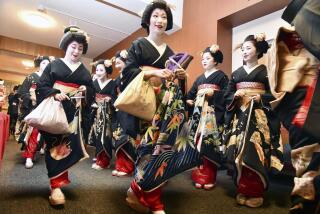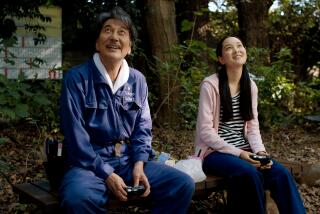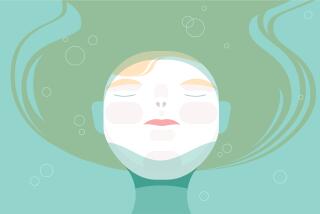Complain? Or just sit there and stew?

Bathing is an art in Japan. Bathing has style. Bathing has etiquette.
The only bath etiquette I was taught was to wipe off the ring after using the tub. By Japanese bathing standards, I’m a barbarian.
The Japanese recognize this lack of understanding in visitors and try to enlighten foreigners with tips in tourist brochures. A booklet from the Japanese Inn Group says first thing, “Do not use soap in the tub.” Illustrations depict the proper method for cleaning oneself: Sit on a low stool in front of a small bucket and scrub away the grime before the bath itself. Sounds simple enough.
On my first trip to Japan in 1991, I traveled with my friend Lu to the mountain resort of Nikko. It’s renowned for its elaborate Toshugo Shrine and a spring festival where 1,198 local men — and two women — re-create a 17th century parade of archers, samurai and brocade-clad officials.
Our pension in Nikko was the first place we stayed that had a communal bath rather than a private tub or shower. Communal did not mean that the genders would bathe together. A hotel sign specified “Ladies Time” from 8:30 to 10:30 p.m. Like the two lone females in the festival parade, Lu and I were the only women there at 8:30 p.m. on a Friday.
The bathroom was lovely. The tub, tiled in blue and gray, could seat three or four people. Steaming water rippled down a boulder-covered wall. Black slate lined the floor, textured underfoot like stepping stones in a stream. The atmosphere resembled an onsen — a mountain hot spring — especially with the wall-sized window at one end of the room.
Lu and I paused at the sight of that window, skimpy towels clutched tight around us. (We had left our clothes in the changing room.) Still, at night, with the hotel perched on a wooded hillside, who would see us?
We grabbed wooden buckets and stools, turning our backs on the window and the world beyond. We had serious washing to do.
Flexible shower hoses and spigots dotted the walls. Selecting one, I scrubbed and sprayed, splashing with abandon. The challenge lay in balancing soap and hose without sliding off the tiny stool designed for folk built on trimmer lines than I. Lu did fall off her stool — twice — rolling on the floor in gales of laughter before we decided we were clean enough to take a bath.
Doing a tub-side dance
That tourist brochure had promised, “When you immerse yourself in a tub of water that is a little on the hot side, you will be able to relax your strained nerves and muscles.”I stepped into the bath and immediately out, relieved I still had skin on my legs. A little on the hot side? You could cook ramen noodles in that water.
Lu and I tried again on the theory that we just had to adjust to the temperature. We hopped in. We hopped out, performing a scalded hokeypokey a few more times before we steeled ourselves to sit down in the bath.
“Now I know how lobsters feel,” remarked Lu through gritted teeth.
If we kept absolutely, perfectly still, we could endure it. A single ripple caused a tidal wave of heat. After five minutes of sitting like a stone, I declared myself “relaxed” and clambered out on rubber legs. Lu quickly followed.
That’s when a young Japanese woman entered the room. She spoke English, so we chatted with her a few minutes while we dried off and she soaped up.
I eyed her as she approached the tub’s rim. Now I would see firsthand how her culture had perfected the art of steeping oneself in a simmering tub.
She knelt and felt the water with her hand, steam curling around her from the trickle down the rock face.
“Too hot!” she yelped and jerked back her fingers.
Then she turned the cold tap on full blast before climbing in.
Susan Lendroth is a freelance writer living in Southern California. Her preferred bathing temperature is several degrees below scalding.
More to Read
Sign up for The Wild
We’ll help you find the best places to hike, bike and run, as well as the perfect silent spots for meditation and yoga.
You may occasionally receive promotional content from the Los Angeles Times.






